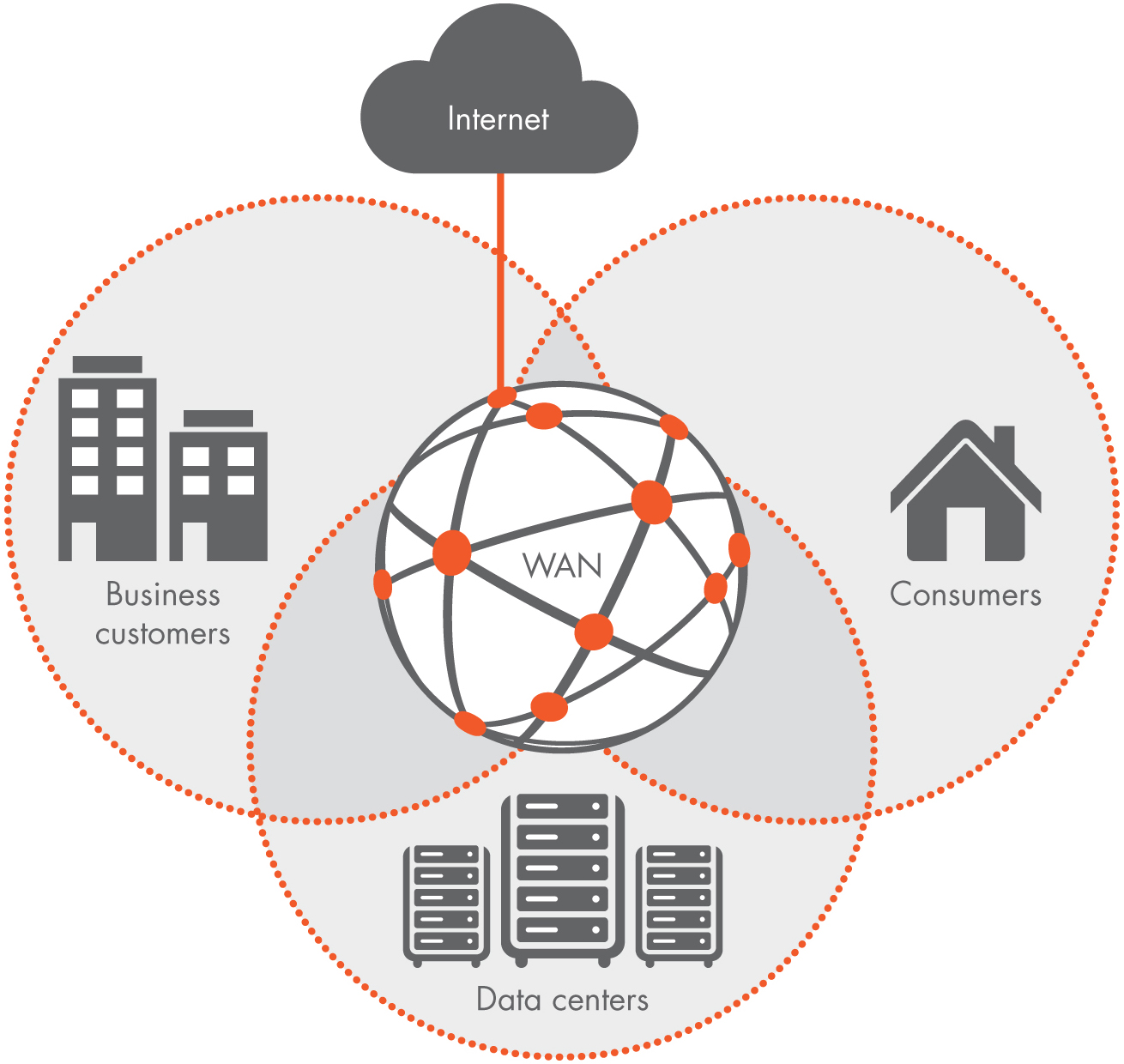SDN at the Edge
White box networking is the key to supporting the requirements for these new ISPs.
The applications vary based on location and end customer. For business customers, the typical desired applications are VPNs for simplified disaster recovery (DR), liquid bandwidth, and self-service
bandwidth provisioning. These are implemented in the network devices at the business data center and business edge.
Figure 2: Service edges in a white-box SDN-driven network
For consumers, we can look at telecommuters, home-based businesses, and power users who access the Internet via fiber to the home (FTTH). All of these want self-provisioned bandwidth and easy-to-implement VPNs for connectivity to suppliers, customers, and the corporate office. These are implemented in the network devices at the customer's premises.Consider an example of compute bursting. This involves liberating new compute resources with the click of a button, setting up a VPN and grabbing some idle CPUs in the data center with pay-for-what-you-use billing.
There is also an example for on-demand DR. The data center terminates the DR tunnel the customer sets up - it ends up in the ISP's storage cloud. This enables customers to do routine backups without the cost of leased lines - the customer can use a portal to create a VPN to the service provider's data center, do the backup, and then turn off the VPN when finished. Services are based on how much bandwidth and storage you used, rather than on a fixed monthly leased line cost.
In each of these service injection points, you need a network that can 1) support lots of diverse applications (voice, video, wireless, big data, IoT, etc.), 2) support change management very quickly (DevOps and automation), and 3) be flexible enough to support new technologies and protocols (disaggregation and SDN).
White box networking is the key to supporting the requirements for these new ISPs. And since these services go all the way out to the consumer in many cases, you need white box and SDN in all parts of the network...in your data center, at your Internet edge, and all the way to the customer edge.
Enabling SDN Technologies
To enable liquid bandwidth, QoS on demand, self-configured VPNs and other services for customers, the service provider implements SDN to build this idea of meter, match and act into the network.For enterprises, they want to be able to leverage their IT efficiently (read: elastic and self service) across a spectrum of on-premise and in-the-cloud services. In this hybrid cloud model, they want to be able to create logical networks, share data and information easily and securely across geographies, and get access to differentiated services when they need them (e.g. traffic engineering, application acceleration, monitoring, and security).



















